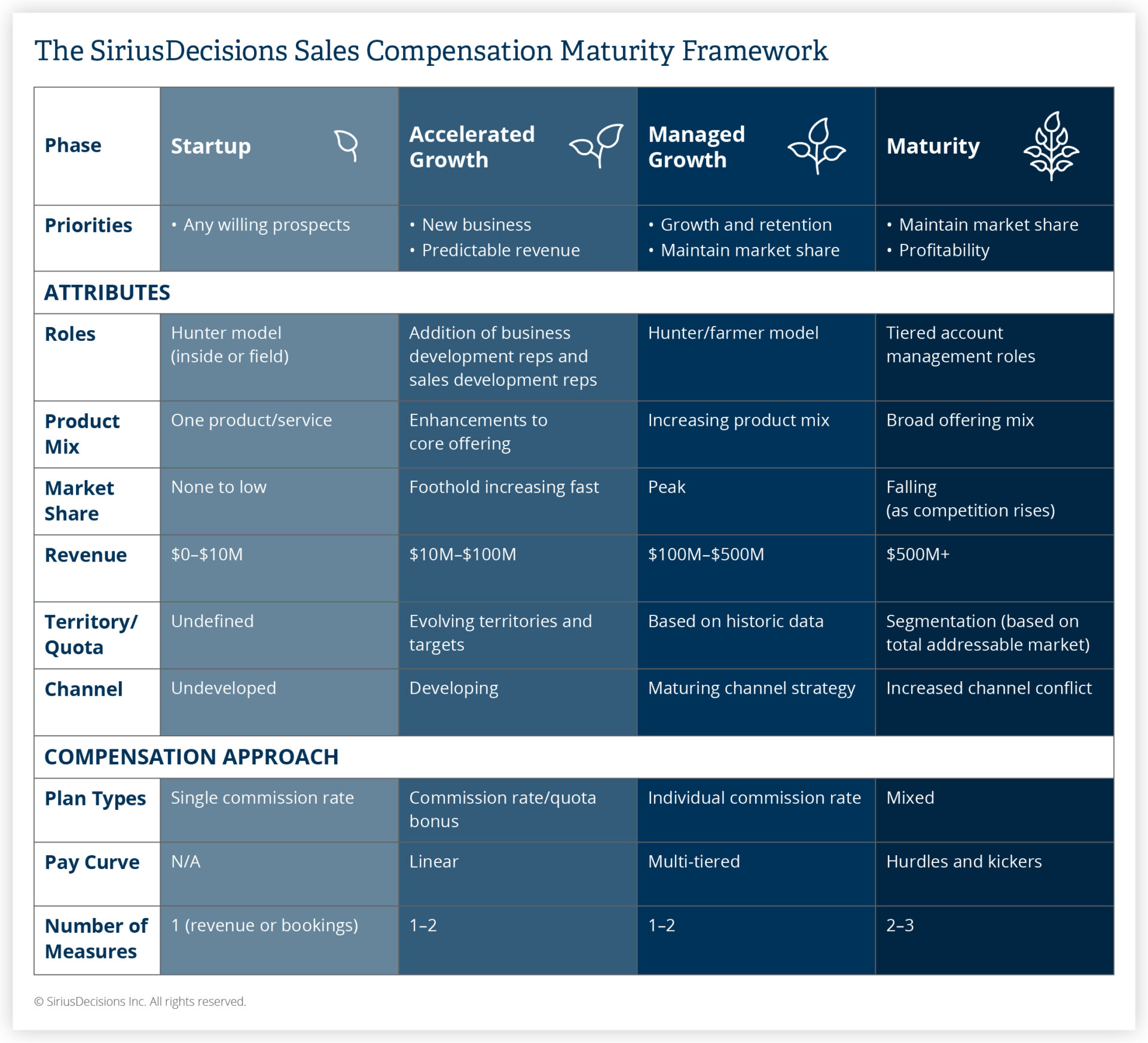Is Your Comp Plan Having a Mid-Life Crisis?
- Organizational growth is often determined by a company’s ability to adapt its go-to-market strategy to meet market needs
- To drive sales growth, companies must align the sales compensation approach with the organization’s maturity phase
- Continuing outdated compensation approaches introduces risk to incentive effectiveness, cost management and sales growth
When you get to the ripe old age of 46 as I am now, you may face a fashion dilemma. Certain elements of your style that were once the essence of cool (white sneakers, leather jacket, skinny jeans) now indicate a man in some form of middle-aged crisis. While I’m not quite ready to shuffle around in slippers and a cardigan (not in public, anyway), like most of us faced with the potential of a family intervention on the matter, I recognize it’s perhaps time to let some things go. Corduroy, here I come!
Similarly, when it comes to sales compensation, it’s important to know when it’s time to leave old plans behind. In many cases, plans created in the early years of the company have remained in place (typically percentage commission rates). They’re often simple to calculate and easy for reps to understand. However, as the company grows and evolves, with a larger sales force in place, different sales roles and defined territories, these types of plans pose an increasing challenge for sales operations to ensure balanced territories, equitable quotas and forecastable compensation expenses.
The issue is symptomatic of the lack of alignment between compensation plan design and organizational evolution. In other words, sales operations leaders must continuously assess whether the compensation model fits with where the organization is now in relation to its structure, go-to-market and commercial priorities. The SiriusDecisions Sales Compensation Maturity Framework demonstrates how an organization’s maturity and commercial priorities could be characterized throughout its evolution through the following phases:

The Startup Phase
The commercial priority in this phase is customer acquisition. Little to no market share exists, sales territories are not yet defined, and selling is often primarily a solo effort by hunter territory reps (i.e. inside sales, field sales). A defined percentage commission (e.g. four percent of every dollar sold) is the most common approach to sales compensation in this phase.
The Accelerated Growth Phase
With sales territories increasingly defined, personal seller revenue targets (quotas) can be set according to the territory potential – resulting in greater individual seller accountability. As companies apply different commission rates depending on the level of the seller’s attainment of their quota, the use of basic plan mechanics increases. The objective is to reward top performers by providing higher rates of commission (accelerators) to drive sellers to meet and exceed their targets.
The Managed Growth Phase
At this phase of growth, we see an increasing separation of hunter (new business) and farmer (existing) roles. Companies may decide to shift to a defined variable compensation model (quota bonus), although it may be called an individual commission rate (ICR). This allows companies to better model sales commission expense and provide a fairer approach with unequal sales territories. It also better supports the increasing number of overlaid sales roles in the sales cycle.
The Maturity Phase
A key challenge is defending market share of the original product or service in an increasingly crowded space while maintaining margins. To incentivize sales of specific products, companies may add “kickers” or SPIFs to commission plans that boost the bonus or commission rates received when these products are sold. They may also use “hurdles” that prevent sellers from benefitting from accelerators or kickers if they have not met specific requirements around product sales, discounting or profitability. The temptation is for companies to add too many measures and complexity, inadvertently diluting the influence of the plans on seller behavior.
Like giving up skinny jeans, changing comp plans is tough but necessary if your annual assessment finds that they no longer align with where your organization is now and where it intends to move to. If you can’t change plans during this planning cycle, start the internal conversation on the need for review and plant the seeds with key stakeholders so it can be addressed in the following planning cycle. Sales operations should be leading the discussion rather than having it imposed later down the line.
Interested in learning about how we help organizations with compensation plan design? Read about our Sales Operations Strategies service.
